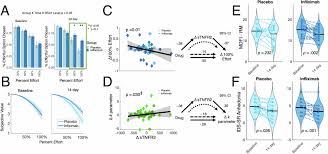In the world of arthritis treatment, a new study has shown promising results for the use of a common anti-inflammatory drug to help boost the effectiveness of existing treatments for patients. This research could revolutionize the way we approach managing arthritis pain and inflammation.
Arthritis is a chronic condition that affects millions of people worldwide. It causes pain, stiffness, and inflammation in the joints, making everyday activities challenging and painful. Current treatments focus on managing symptoms and reducing inflammation, but they may not always be effective for all patients.
The new study, conducted by researchers at the University of California, Berkeley, looked at the use of a commonly prescribed anti-inflammatory drug in combination with existing treatments for arthritis. The drug, known as celecoxib, is a nonsteroidal anti-inflammatory drug (NSAID) that is typically used to relieve pain and inflammation in conditions like arthritis.
The researchers found that when celecoxib was used in combination with existing treatments, it significantly boosted the effectiveness of those treatments. Patients who received the combination therapy reported reduced pain, improved mobility, and decreased inflammation compared to those who only received standard treatments.
This is a significant finding because it suggests that by adding celecoxib to existing treatment regimens, we may be able to provide better relief for patients with arthritis. This could lead to improved quality of life and better management of symptoms for those living with this chronic condition.
The researchers believe that celecoxib may enhance the effectiveness of existing treatments by targeting different pathways involved in inflammation. By doing so, it can help to reduce inflammation and pain more effectively than standard treatments alone.
While more research is needed to confirm these findings and determine the best way to incorporate celecoxib into existing treatment regimens, this study offers hope for a new approach to managing arthritis. By leveraging the power of existing medications in new ways, we may be able to provide better relief for patients and improve their quality of life.
In conclusion, the use of celecoxib in combination with existing treatments for arthritis shows promise for boosting the effectiveness of current therapies. This research has the potential to revolutionize the way we approach managing arthritis pain and inflammation, offering hope for better outcomes for patients in the future.

